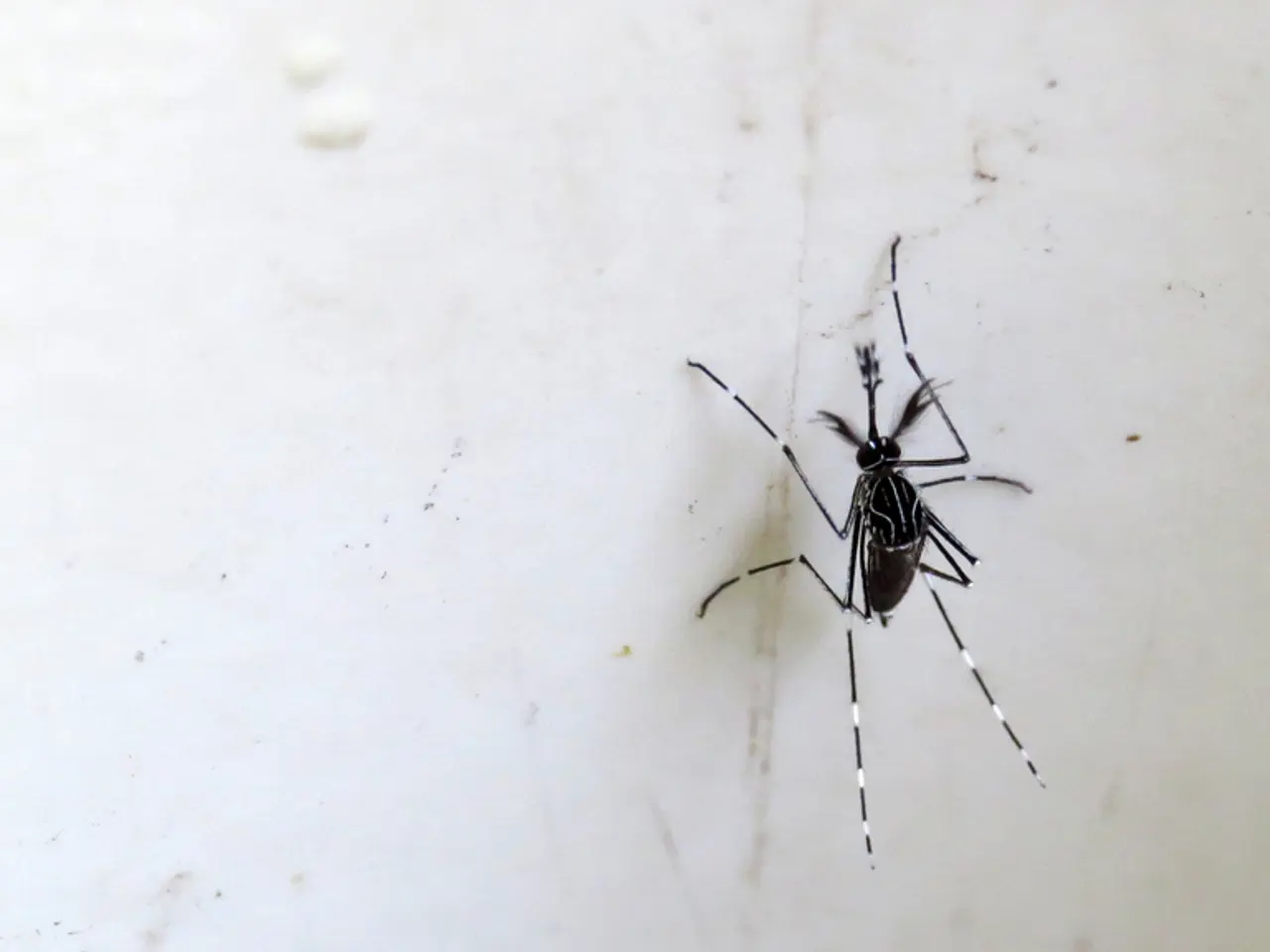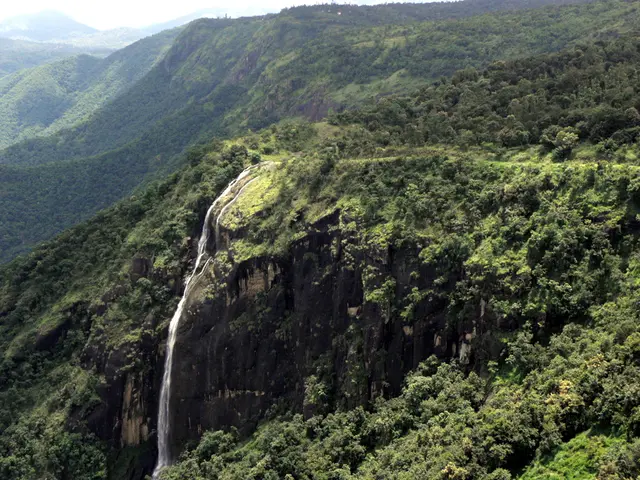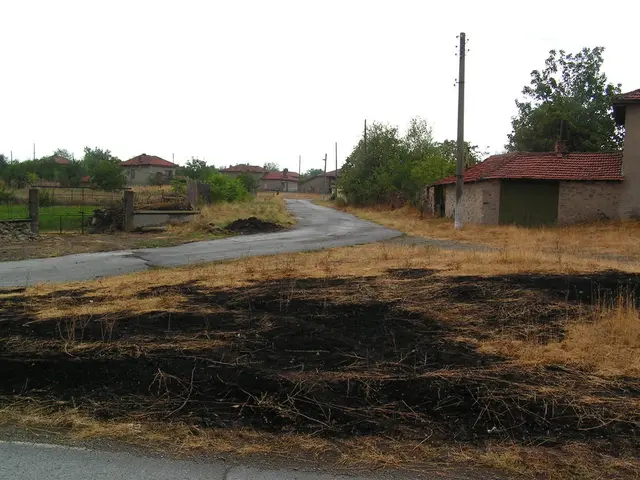Raises travel advisory for Brazil and Reunion Islands due to chikungunya outbreak
Large chikungunya outbreaks are currently ongoing in Brazil, Réunion Island, and several other countries, as reported by health authorities. The disease, primarily spread through the bite of infected Aedes mosquitoes, has caused significant concern worldwide, with over 250,000 cases reported globally so far in 2025.
In the Americas, Brazil is experiencing the largest outbreak, reporting 176,391 cases as of mid-2025. The country is followed by Bolivia with 3,863 cases and Argentina with 2,817 cases. These numbers represent part of over 183,000 cases reported across 11 countries in the Americas.
The Indian Ocean region, particularly Réunion Island, has seen a large outbreak where an estimated one-third of the population has been infected. Other islands affected include Mayotte and Mauritius. In Asia, notable numbers of cases have been reported in India, Sri Lanka, Pakistan, and Southeast Asian countries such as Indonesia and the Philippines.
Regions previously free of local chikungunya transmission, including southern Europe, have started reporting occasional local cases, attributed to climate change facilitating mosquito breeding.
The Centers for Disease Control (CDC) has raised its travel alert for Brazil and Réunion Island to Level 2, advising travelers to exercise increased caution. Level 1 alerts apply to other affected countries in Asia and the Americas.
Mosquito control efforts, health system strengthening, public education, and travel advisories are critical strategies to mitigate the spread and impact of the disease. Health authorities emphasize the importance of mosquito control, including surveillance, elimination of breeding sites, and use of insecticides. Rapid detection, diagnosis, and clinical management of chikungunya cases are also crucial. Public education campaigns promote personal protection such as use of mosquito repellents, wearing long sleeves, sleeping under mosquito nets, and avoiding outdoor exposure during mosquito activity times.
In light of the ongoing outbreaks, support for vaccine development and research is encouraged to better control outbreaks in the future. The World Health Organization (WHO) has issued urgent calls to action to control the spread and prevent further infections.
A summary table of key affected areas and alerts is provided below:
| Region | Cases (Approx. 2025) | Alert Level (Taiwan CDC) | Notes | |--------------------|-----------------------------|------------------------------------|------------------------------------------| | Brazil | ~176,000+ | Level 2 (Enhanced Precautions) | Largest outbreak in Americas | | Bolivia | 3,800+ | Level 1 | Significant outbreak, CDC travel notice | | Argentina | ~2,800 | Level 1 | Among top affected in Americas | | Réunion Island | ~50,000+ (May 2025 data) | Level 2 (Enhanced Precautions) | One-third population estimated infected | | Mayotte, Mauritius | Significant but unspecified | Not specified | Indian Ocean outbreaks spreading | | India, Sri Lanka, Pakistan | 33,000+ (since June 2025) | Level 1 | Ongoing cases in Asia | | Guangdong (China) | Not specified | Level 1 | Regional alert |
As the global fight against chikungunya continues, cooperation and coordination among health authorities and the public are essential to control the spread and protect vulnerable populations.
- The science behind chikungunya outbreaks has become a significant focus in medical-conditions research.
- Chronic diseases, like chikungunya, highlight the importance of workplace-wellness programs in various industries.
- Medics are studying the impact of climate-change on respiratory-conditions, including the spread of chikungunya.
- Digestive-health research also includes investigations on the interaction of chikungunya with the gastrointestinal system.
- Eye-health professionals are monitoring potential chikungunya symptoms affecting vision.
- Hearing specialists have not yet identified any direct connections between chikungunya and hearing issues.
- Health-and-wellness practitioners are educating individuals on prevention strategies for chikungunya and other contagious diseases.
- Fitness-and-exercise routines may offer some protection against chikungunya, boosting the immune system.
- Sexual-health is less directly impacted by chikungunya, but proper hygiene and self-care remain essential.
- Autoimmune-disorders patients should monitor themselves for chikungunya symptoms, as the disease may worsen existing conditions.
- Companies in the environmental-science industry are working on finding solutions to control mosquito populations.
- Mental-health experts fear the psychological toll of chikungunya outbreaks on affected communities.
- Mens-health organizations are emphasizing preventive measures specific to men, such as using mosquito repellents when working outdoors.
- Skin-care tips include wearing protective clothing to shield against mosquito bites.
- Therapies-and-treatments for chikungunya are limited, but over-the-counter pain relievers can help manage symptoms.
- Nutrition plays a crucial role in boosting immunity and resilience against chikungunya.
- Aging populations are more susceptible to complications from chikungunya, necessitating increased awareness and precautions.
- Womens-health organizations are advising pregnant women to take extra precautions against mosquito bites.
- Parenting resources are offering guidance on how to protect children from chikungunya.
- Weight-management practices can contribute to overall health, reducing the risk of developing severe chikungunya symptoms.
- Cardiovascular-health patients should follow their healthcare providers' advice on whether they are at higher risk for chikungunya complications.
- Financial institutions like Medicare are working to cover the costs associated with chikungunya diagnoses and treatments.
- CBD, as a potential anti-inflammatory, has sparked discussions about its potential role in treating chikungunya symptoms.
- Neurological-disorders treatment also involves addressing symptoms related to chikungunya, such as joint pain and swelling.
- The study of climate-change in environmental-science textbooks has gained importance due to its effects on disease outbreaks like chikungunya.
- Finance textbooks now include sections on epidemic-related economic impacts, such as those caused by chikungunya.
- CBD-infused skincare products are gaining popularity as a way to combat skin-conditions associated with mosquito bites.
- In the realm of space-and-astronomy, climate-change research has direct implications for understanding extraterrestrial life and its potential relationship with disease outbreaks.




